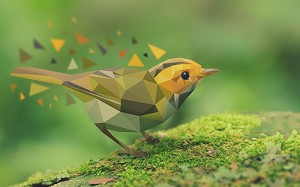In the beginning of the last century D’Arcy Thompson arose question what is quite related to nowadays. In his book “Growth of Form” he devote a huge part to method of explanation of transformations biological shapes and forms using mathematical methods and physics. In his “Theory of transformations or comparison of related forms” he gave mathematical descriptions on how physical processes affect biological growth. D’Arcy Thompson considered how mathematical functions could be applied to pictures of one living organism to transform them into others.
Thompson gave a lot of examples of forms represented nature: bones, leaves, skulls and so on, and explanations of changing shapes of one species according mathematical system of coordinate. Some images he used was taken from the artist and mathematician Albrecht Durer’s work on proportion: De Symetria Partium in Rectis Formis Humanorum Corporum Libri… Using a variety of linear and quadratic transformations, D’Arcy Thompson has an extensive quantity of the ideas of facial angle associated with this example. Among his most striking examples are the use of linear and non-linear functions to, for example, alter pictures of baboon skulls into skulls of other primates or humans, to transform the profiles of various fishes into one another, as well as showing how the corresponding bones (shoulder blades for example) in different species were related.
He used four basic methods of deformation learning changing of shapes:
1 – changing the dimensions of system,
2 – extensions between axes are not equal,
3 – axes inclined to one another at a determined angle,
4 – use of radial coordinates, radiating from a point.
Author considered that correlations which had seemed too complex for analysis is possible to understand with a very simple graphic expression. And using method of coordinates capable translating the form of a curve, or the position of point into numbers and words.
Now I have a question how can we use this precedents logic today? We can find that maybe the roots of some modern digital tools goes from this work, or maybe it is just similarities? Maybe we can apply the idea of learning transformations of biological creatures to analysis of transformations to buildings, for example, to make an analysis of old reconstructed building, and we can understand what influenced on it during the times, the way of history and peoples thoughts… At least, evolution had happened not only with people and animals, but also with environment… and can we consider architecture as a part of changing environment, as something dynamic during time? How every unit of architecture behave in this dynamic process as part of something big and also as it could be bottom up. All this questions are interesting for me, every I could try to develop as a further research, if I had a chance.

